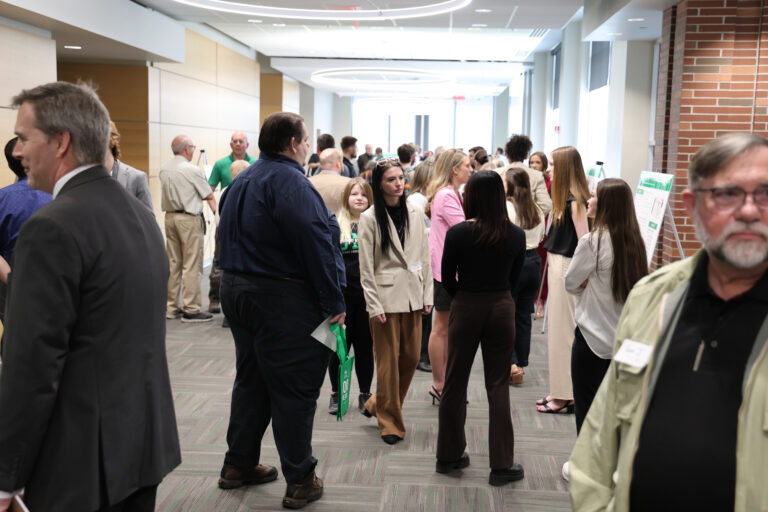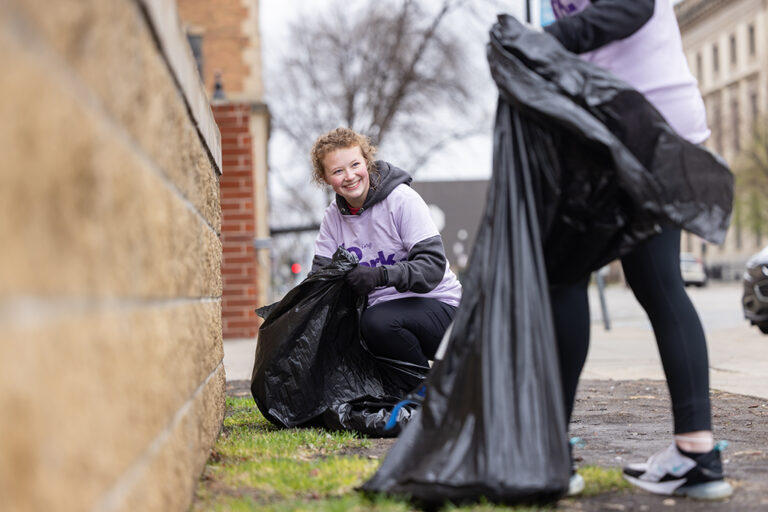Library makeover: Welcome noise for UND’s quiet place
Chester Fritz Library looks to completed renovations, new services and innovative capabilities in 2020
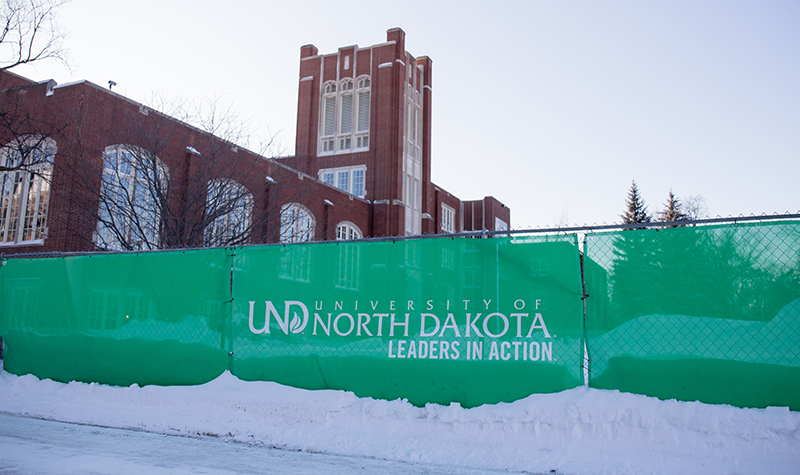
During the semester break, for only a few weeks while most students were away, the quietest place on the UND campus became a hubbub of construction noise.
After 2016’s mini-renovation of the second floor reference and research area, the state’s largest library at the core of campus is in the midst of its first major rework since 1981. As UND Today alluded to in September’s update, the Chester Fritz Library’s looks are starting to match its modern-day functions.
More important, new services are taking shape to complement and enhance the library’s modernized spaces.
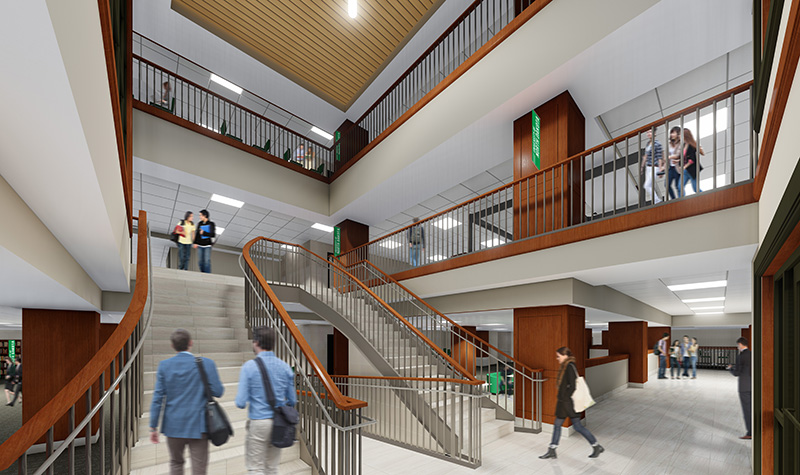
Renovation game
Stephanie Walker, dean of libraries and information resources, likens the renovation process to a shape-fitting game of Tetris at times. Crews of contractors and library staff shuffle their work areas as some wings and floors open while others remain under the plastic and plaster wraps of a building-wide revamp.
Overall, “the timeline is pretty stable,” Walker said. Some project milestones originally forecast for late fall 2019 have moved into 2020, but the reopening of the library’s north entrance will occur during February. That will be the cue for the south entrance to close for its own refurbishment through May.
Once the weather warms, new windows will be installed throughout the structure — representing big savings through energy efficiency, Walker said. The fourth and final floor, closed at the start of January, will get new lighting, ceilings and a sprinkler system, along with all of the other power and data access upgrades now found throughout Chester Fritz Library.
The revised north entrance is the project’s centerpiece, literally and figuratively. Ascending the soon-to-be-built staircase to the second floor will reveal revitalized study spaces, including group study rooms, and friendly staff ready to guide those who made the climb carrying questions.
The plan reimagines the layout and wayfinding around what was previously a somewhat confusing front entrance.
“People will be able to see everything they might want to do when they walk in,” Walker remarked. “Basically, everything we’ve done has been to consolidate services and make them easier to access.”
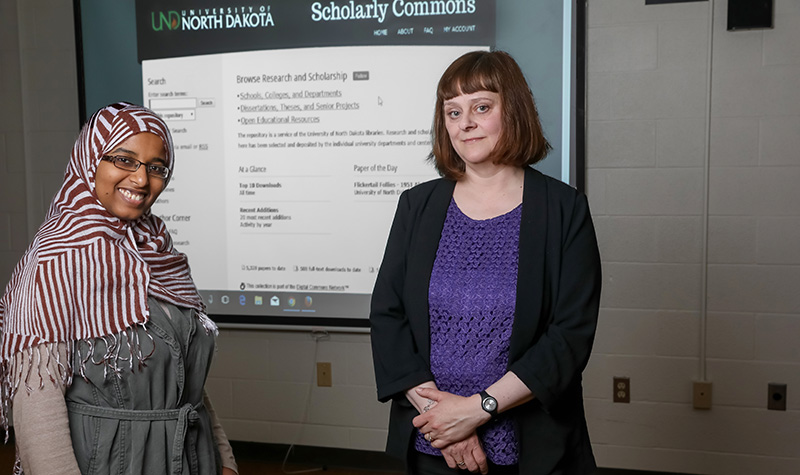
Sights on service
As the new year and spring semester unfold, Walker is looking ahead to a stronger focus on service as acquiring and preserving collections enters the digital domain. Though the work of curating and cataloging journals and academic resources remains, the fact that fewer books need sorting lets staff move toward managing faculty research data, for instance.
UND Scholarly Commons, launched in September 2017, houses the University’s wealth of faculty-produced research, educational resources and creations. It has been accessed hundreds of thousands of times across the globe.
The development of the online institutional repository has gone a long way toward assuring grant funders that research results and data can be readily, publicly available, Walker said. It also helps the University’s efforts in making open educational resources (OERs) available on campus — a process that has saved students upwards of $10 million since 2015.
The library’s push toward service in 2020 is mainly geared toward students. When someone working on a project or assignment comes into the library looking for resources, Walker wants them to right away encounter people ready to help.
Close to the established circulation desk, at the north second-floor landing, the Knowledge Commons will comprise a series of staffed stations offering a litany of student services. The intent is for some of the space to remain flexible. For instance, representatives from tutoring services and academic advising can connect with students on the spot, or UND’s admissions office could arrange pop-up sessions during critical times of the academic year.
By May, the Writing Center will be the latest among these “Knowledge Partners,” as Walker calls them. The Center is a natural fit in the library, as many students seeking resources also want feedback on their writing. Likewise, many students hoping to develop their writing skill also seek guidance for their research.
“We’re trying to pull more of these student services in, and more things that make sense for the space,” Walker said.

Students helping students
The Knowledge Commons is also giving library staffers the space to try new things. One such effort, the Peer Research Consultants program, is showing early promise.
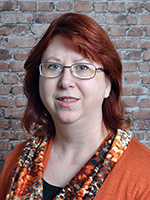
Librarian Karlene Clark, coordinator, said the idea is for peers to teach peers how to use the research tools available to them in the library and online.
“Studies have shown that students are less likely to want to go to somebody older and somebody on the professional level when it comes to asking questions,” Clark said.
Walker sees such anxiety as a sign of the times. Decades ago, students came into libraries comfortable with the fact they needed to learn how to use database tools. Today’s digital natives, raised by the power of Google, are coming in with a higher expectation of themselves.
“It’s not really fair,” Walker remarked. “Nobody ever has expected them to know it all except themselves.”
Through Peer Research Consultants, students could very well consult someone they’ve been in class with, or someone who has recently done similar research. These peer consultants have months of training with librarians, to boot.
Selected recruits will spend time with reference librarians learning what it takes to be a valuable point of contact for people using the library. They work through scenarios, shadow librarians in classroom visits and learn the standards of the Reference User Services Association.
“We want them to feel confident when they get out to the desk,” Clark said. “They have to have experience in the library, and they have to demonstrate that they’re good with customer service.”
Same goals, new media
Asked about all of the upgrades and new neighbors, with University IT moving in on the bottom floor, Clark responded with enthusiasm.
“I think it’s great to know that we aren’t stuck in the dark ages,” Clark said. “It’s not just where students come to ask, ‘How do I find a book? How do I find an article?’ But rather, ‘How do I navigate this technology?
“For us to have those skills to be able to help them out is huge, because that’s the goal of a library: to provide the knowledge where it’s needed.”
Furthermore, having University IT directly below has been a “lifesaver” as technology troubles can stymie researchers and librarians alike, Clark said. The library and UIT are now in the process of developing a checkout system for new technologies. Much like scanning a book that’s in the library’s system, soon the roster will include headphones, laptops and virtual reality headsets.
“It’s really exciting stuff,” Clark beamed.
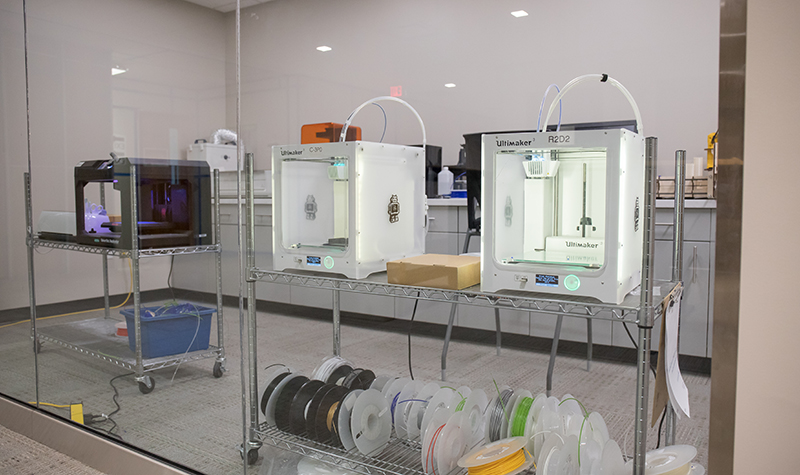
High performance computing
Another point of excitement is the culmination of the third floor laboratory space dedicated to cutting-edge computing and data visualization technology. A few names have been tossed around, but Aaron Bergstrom refers to it in an all-encompassing manner.
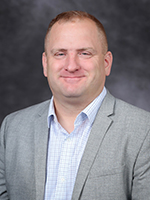
“It’s a virtual reality, artificial intelligence and autonomous systems lab,” said Bergstrom, the University’s advanced cyberinfrastructure manager, who is developing the space.
Six workstations and an open “activity space” comprise this latest library development, opening Big Data-age capabilities to the entire campus. The lab will be powered by 10-gigabyte network speeds and direct access to the University’s private research computing cloud and data center — the hub of UND’s Division of Research & Economic Development’s high performance computing endeavors.
It will feature a 24-headset virtual reality classroom kit; a fully-supplied autonomous systems room (think wires and soldering irons); a structured light digitizer capable of scanning real-world objects into 3D virtual space; and a dedicated machine room housing racks of state-of-the-art hardware with video, audio and USB connections piped into each workstation.
The lab is essentially a technological playground primed for exploration by students and instructors alike, Bergstrom suggests.
“Libraries are changing,” he said. “Having a virtual reality and artificial intelligence lab in this centrally located space will allow the Chester Fritz Library to enable university research activities in the Grand Challenges areas of Big Data, autonomous systems, human health and rural health & communities.”
Opened alongside the UIT space, the Makerspace on the ground floor hosts 3D printing, milling and engraving tools. An idea can move from its inception to design to manufacture, all within the library. In combination with high-end graphics processing, artificial intelligence and machine learning capabilities, the possibilities at Chester Fritz Library are endless.
“The whole idea of it was to open it up for faculty and students to try new things,” Walker said. “Virtual reality is being used to train people for all kinds of scenarios — these aren’t just quick, new toys.”


